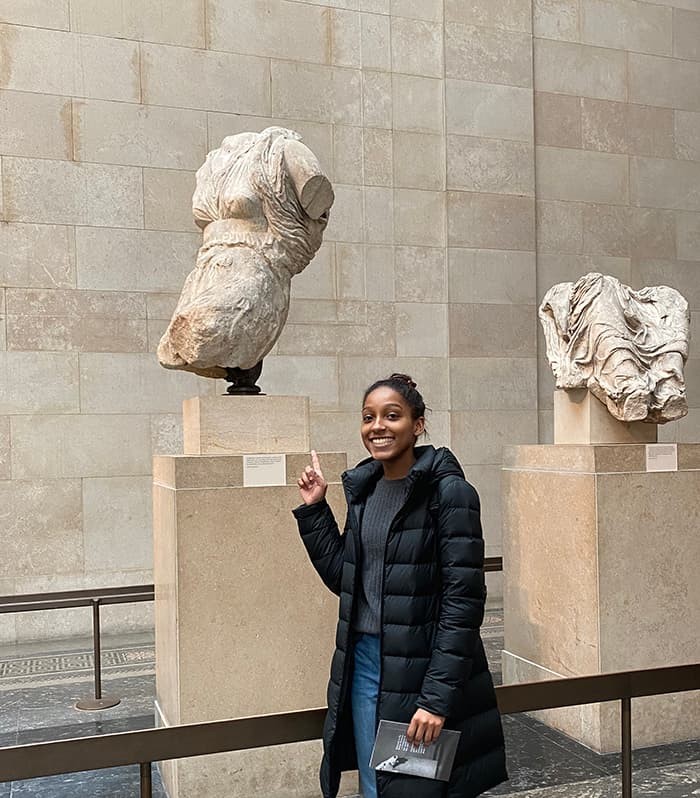Ariel Lynch
Here are some of Ariel’s thoughts on her most meaningful experiences – past and present – and her hopes for the future.
Why did you decide to become an AH major?
During my sophomore year of high school I took AP Art History and was instantly enamored with the subject. I loved learning about works of art and intersections with their socio-historical contexts. I decided to become an art history major because I wanted to work in a career that would allow me to continue learning about art from its historical/political/sociological context, and not just aesthetic qualities.
How does it relate to your program in the Lynch School of Education?
I think my appreciation of the sociological aspects of art history helped me realize that I wanted to branch out from exclusively being an art history major. I ended up in the Lynch School of Education because I also have a passion for education, and in the applied psychology major and the community, advocacy, and social policy concentration, I found a happy mix for the two.
What AH teachers and/or courses have inspired you?
My two favorite art history courses that I’ve taken at BC were actually during my senior fall. I really enjoyed the Research Seminar with Professor Anderson and Nineteenth-Century Art with Professor Wunsch. My research was focused on representations of the black female body in nineteenth-century European art and the readings and discussions in both classes helped me in forming my argument: that a combination of socio-historical factors (African slave trade, European colonialism of Africa, imperialism, etc.) during the nineteenth century translated into the characterization of the black woman as “other” in artwork during that time period.
Throughout my time at BC, Professors Netzer and Leone have helped me in all of my endeavors, whether that be academically or vocationally.
Have you had internships or summer jobs in the arts? What have you learned?
The summer after my junior year, I interned at the Museum of Fine Arts, Boston, in the Education Department. At the MFA, I was able to gain valuable teaching experience by conducting research and leading tours at one of the largest art museums in the country.
What are you most proud of – academically or personally?
I'm very proud of my work with the PULSE Program as a member of the PULSE Council and as a student. With the help of the PULSE Program, I've been able to expand my understanding of social justice and incorporate service into my life and future career plans.
What do you plan to do after graduation?
After graduation, I’ll be going to graduate school to study public humanities at Brown University.
How do your AH studies relate to your career goals?
In the future I hope to work in the nonprofit sector at an organization focused on art education and/or the community arts. With my art history and applied psychology majors I think I’ll have the academic background in traditional art history and community psychology to be prepared for a job in community art education.
What advice would you give to students in the Art History program?
Don’t be scared to question or challenge the discipline of art history. I’ve been lucky that in many of my art history classes, my professors have encouraged and aided in our questioning of the canon of traditional art history and the factors that make a work of art “good” or “bad.” It’s no secret that the academic discipline of art history was developed primarily by European men in the nineteenth century, and I’ve found it useful to question the art that we learn about - and the way that we learn about it - in order to create my own art historical perspective.
Ariel is from Orlando Florida, and her hobbies include long-distance running and watching Christopher Nolan movies. She is most thankful for the “incredible network of friends and family” that support her in all of her endeavors, “especially my roommates from my former stomping grounds, Mod 38B!”


